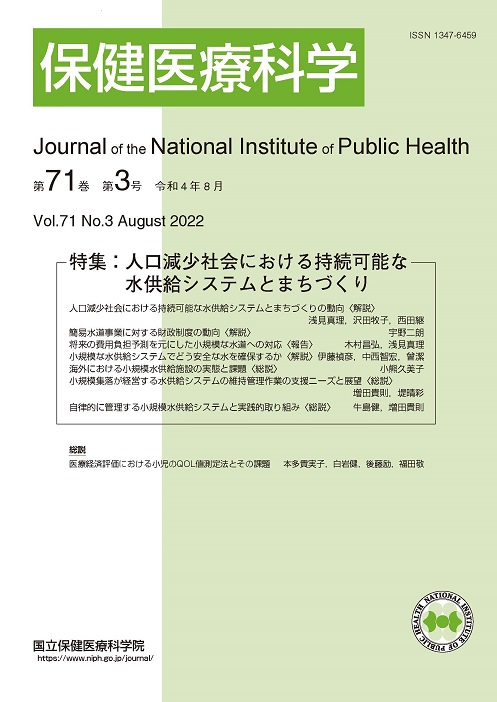Volume 71, Issue 3
Sustainable water supply system and community development with a declining population
Displaying 1-9 of 9 articles from this issue
- |<
- <
- 1
- >
- >|
Topics
-
Article type: Preface
2022 Volume 71 Issue 3 Pages 193
Published: August 31, 2022
Released on J-STAGE: September 23, 2022
Download PDF (1152K) -
Article type: Note
2022 Volume 71 Issue 3 Pages 194-207
Published: August 31, 2022
Released on J-STAGE: September 23, 2022
Download PDF (2216K) -
Article type: Note
2022 Volume 71 Issue 3 Pages 208-215
Published: August 31, 2022
Released on J-STAGE: September 23, 2022
Download PDF (1223K) -
Article type: Practice Report
2022 Volume 71 Issue 3 Pages 216-224
Published: August 31, 2022
Released on J-STAGE: September 23, 2022
Download PDF (2643K) -
Article type: Note
2022 Volume 71 Issue 3 Pages 225-233
Published: August 31, 2022
Released on J-STAGE: September 23, 2022
Download PDF (2712K) -
Article type: Review
2022 Volume 71 Issue 3 Pages 234-240
Published: August 31, 2022
Released on J-STAGE: September 23, 2022
Download PDF (2497K) -
Article type: Review
2022 Volume 71 Issue 3 Pages 241-253
Published: August 31, 2022
Released on J-STAGE: September 23, 2022
Download PDF (2724K) -
Article type: Review
2022 Volume 71 Issue 3 Pages 254-263
Published: August 31, 2022
Released on J-STAGE: September 23, 2022
Download PDF (1667K)
Articles
-
Article type: Review
2022 Volume 71 Issue 3 Pages 264-275
Published: August 31, 2022
Released on J-STAGE: September 23, 2022
Download PDF (1662K)
- |<
- <
- 1
- >
- >|
